Two types of education mode hybrids are adopted by parents dissatisfied with traditional schools. Because they can often overlap, it can be hard for parents to tell the difference between them.
Hybrid Learning is the hybridization (mixing) of online and in-person education. A student who engages in hybrid learning goes to an in-person education provider and also learns online.
Hybrid Classrooms refer to the hybridization (mixing) of online and in-person teaching. A teacher in a hybrid classroom is simultaneously teaching the students present in the classroom and those watching the class online.
Schools with Hybrid Classrooms offers innovational online learning experience allowing students to come to class or engage in learning remotely. So you can get the most flexibility in Hybrid Learning from a school that has hybrid classrooms.
After hybrid schools, online schools are the most accommodating institutions for online learning. Conventional schools are least likely to make room for the hybrid education mode. Having addressed hybrid classrooms, let's take a deeper look at hybrid learning.

Hybrid learning is one of the leading future trend in online education. It is an education model that combines in-person education and remote education. It is adopted for its depth and flexibility but can also be considered for its cost-effectiveness.
By definition, the Hybrid Learning model has to be a hybrid of two education models. Conventional education is delivered in person, while online learning happens over the internet. The hybrid model refers to any combination of "in-person" and "online" education.
As mentioned earlier, a Hybrid Classroom is an educational space where some students are present in-person while others join online. But you don't need a hybrid classroom to be a hybrid learner. As long as you get some of your education in person and some of it remotely, you are considered a Hybrid Learner.
At its broadest, Hybrid Learning covers a student taking private tuition online alongside going to a traditional school. But when you generally hear the term, it refers to a mode of study where the "online" and "in-person" education is divided pretty evenly. Most students in Hybrid Learning get half of their schooling in a classroom setting and half of it at home.
This can be an online school like 21K School, Asia's leading online education provider.
This can be a tuition center or learning center, as most conventional schools don't allow half-day attendance. Alternatively, an in-person can be a private visiting tutor.
The table below covers different ways to hybridize your ward's education
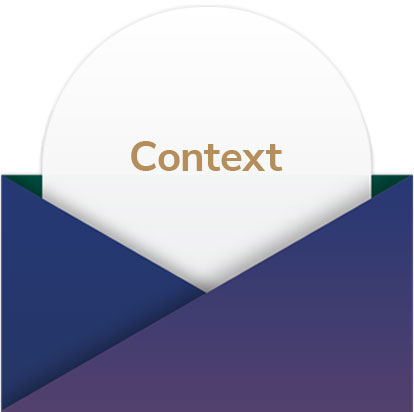
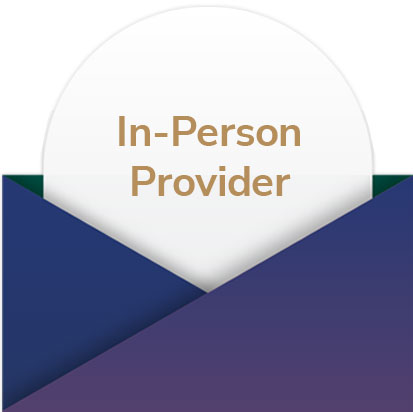
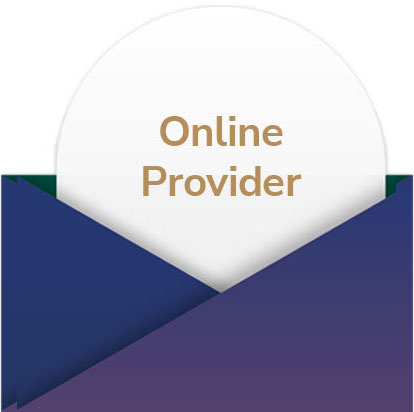
To the uninitiated, the above arrangements might seem pretty impractical because of the drawbacks of online learning and of in-person education.
When your child learns in a standard classroom, you have to drive him to school. When your child engages in online learning, you don't have to bother with the transport, but you have to monitor his engagement.
In Hybrid Learning, you have to take care of the transport as well as the monitoring aspect. So, why not just pick online learning? If you want to consider 100% online education, check out our complete resource on online education.
But if you're curious about the rise of Hybrid Learning's popularity and want to know more about its ins and outs, you can continue reading.
Hybrid Learning is a choice many parents make when they want to offset the drawbacks of online learning and want to erase the limits of in-person education. In short, Hybrid Learning allows students to learn from the comfort of their homes without missing out on the social aspects of in-person education. It is a perfect solution to all the challenges faced by 21st century students.
Going beyond the social aspects alone, one must also consider the engagement factor. Sometimes, a child needs proximity to engage with his course content. In traditional higher education, it is common to pair Lectures with Seminars, where the latter are conducted in smaller groups.
The idea is to deliver the broad lesson in a one-way lecture and follow it with an interactive seminar to instill its contents in the students. Hybrid learning makes the lecture+interaction model available to young learners.
In properly designed hybrid education models, the students receive lessons online and then receive in-person interactive sessions reinforcing the online lessons.
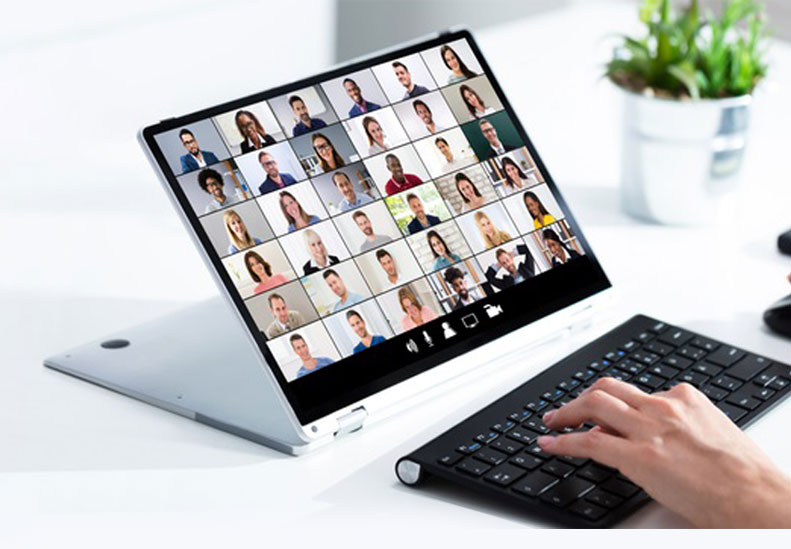
If you feel like your university education was much better than your pre-university education, then you have the opportunity to give your child a university-style education mix that can help him understand his course content instead of having to cram it.
While Hybrid Learning allows a university-style education consisting of lessons followed by interaction, it isn't always how it works out. Hybrid Learning is a flexible mode of education, which is highly malleable, so there are many ways to make it work.
Hybrid Learning works with the help of remote instruction tools like video conferencing and in-person learning spaces. To find out how Hybrid Learning works, one must first figure out traditional learning VS hybrid learning.
Students learning in a physical classroom get the benefits of socializing, group work, and in-person monitoring. Depending on how the hybrid model is set up, a student might spend half of their school day learning in a physical classroom. Alternatively, the student might go to school for a full day but not every day of the week.
Whatever's missing from a hybrid learner's in-person schooling is topped up via remote learning. Typically, video conferencing is used to deliver lessons online. If a student goes to class for half the day, he gets online lessons for the rest of the day. In case he goes for the entire day on alternate days, he gets online lessons for the same duration on the rest of the weekdays.
Negotiating an attendance schedule can be difficult for parents who choose Hybrid Education because physical schools aren't lenient enough to accommodate half-days or alternate-day attendance.
Schools that have hybrid classrooms can be great for students who want to split their education between remote and in-person modes. That's because the education source can remain the same in online as well as in-person learning.
How does it work for a student might vary depending on whether one receives hybrid education from a single source (a hybrid classroom) or various sources.
The Hybrid Learning Model is malleable, so it can be hard for newly interested parents to grasp its structure. Unlike online-only classes, homeschooling, or conventional education, the exact shape of a typical school week for your ward depends on the education sources, your situation/location, and your preferences.
Here are examples of four students engaging in different types of hybrid learning alongside an overview of how the hybrid model would work for them.
Student A

Hybrid Classroom student
This student can go to his classroom or can tune in via video conferencing because the classroom has chairs as well as a live video feed.
Student B

Additional Education student
This student attends a regular school but gets online lessons from private tutors to better understand his course content.
Student C

Online School student
This student goes to an online-only school like 21K School but also has a private visiting tutor who explains concepts to him in person.
Student D

The half-day student
This student gets half his learning hours in person at a learning center and the rest online.
The most common model for hybrid education is illustrated with Student A. It requires one to live close to a school that offers online attendance as well as in-person learning. Because Hybrid learning is becoming popular, more schools might adopt online-learning aspects. But for now, finding hybrid classrooms can be quite challenging.
Aside from the difficulty in finding schools with hybrid classrooms, a handful of obstacles are keeping hybrid learning from becoming mainstream. Still, this mode of education is rising in relevance because of its benefits. In this section, you will learn about the positives and negatives of hybrid education alongside ways to make this model work in your ward's favor.
The main benefits of hybrid learning revolve around its depth, flexibility, and feasibility. Here are the specific homeschooling advantages of choosing hybrid education for your child
Hybrid learning makes room for a student's natural learning inclinations as well as his context. Students who need to work during school hours can take fewer classes in person, while students with noisy and distracting homes can have fewer online sessions.
Opportunities for personalized learning - The closer your ward's education is to conventional schooling, the closer it is to mass education. Hybrid learning introduces room for making education bespoke. To the extent that hybrid learning increases the teacher-student interaction, it personalized education and offered individual attention to all students.
If you take hybrid education to its broadest definition, it covers private tuition delivered online to students who go to conventional schools. Hybrid education's "at home" part is highly interactive, whether it entails one-on-one tuition or a small group class.
Because hybrid education opens up the door for online learning, it comes with multiple benefits of online schools. These benefits include updated education materials and access to new methods of learning.
A major problem with hybrid learning opening up the door for online learning is that it also comes with the drawbacks of online schools. And one of the most prominent issues with online learning is the high screen time. Screen time is positively correlated with drops in focus, especially after 90 minutes.
Also read about our take on how to motivate your homeschooled child.
Another problem that the "online" part of the hybrid education model might have is that it is limited by technology. If a student's internet is not fast enough, his education can be interrupted. Even if the student's computer hardware has any issues, his education suffers.
Hybrid learning can be isolating if it is mismanaged. It is very easy for students to miss out on socializing, which is natural in a full-day schooling model. Socialising for kids in society is essential to child development, as it helps children learn how to interact with others, communicate effectively, and form relationships.
Also read – Homeschooling and Socialization: How to Keep Your Child Connected
Sometimes, a hybrid learning crisis can occur because of a teacher's inability to teach online. If teachers aren't trained properly, they can lose their students' attention when delivering instructions online. And in some cases, they can lose their internet connection.
Also read: 5 Tips for Online Teaching to Make Online Classes a Success
Hybrid learning is a model that can help achieve qualification via online schooling. But it also has drawbacks if the execution is poor. Here are some steps you can take to improve the hybrid learning model for your ward.
Your involvement in your child's education can increase his engagement with the learning materials and instill a sense of duty in him.
Hybrid education is free from the limitations of in-person education. So online resources and technology can be used to fix issues like the student-to-teacher ratio.
Also read: How technology is changing education.
While the hybrid education model is malleable, it is not meant to be structureless. You can ensure compliance and overcome complacency issues by mapping out the in-person and online hours and building a schedule.
Whether you want your ward to ace their board exams or you want them to have the employable skills of the future, being certain about your goals can help you pick the right mix of online and in-person classes. Moreover, goal-setting can help you choose the right curriculum and learning materials.
Finally, you have to understand that you don't need to do everything yourself. Hybrid education is adopted by thousands of parents, and by connecting with them, you can receive valuable emotional support and guidance.
On Facebook, you can find communities of parents who have chosen hybrid education for their children. You can also join groups of parents who have enrolled their children in online schools. The latter might help you solve the disadvantages of homeschooling.
From support-seeking to education delivery programs, hybrid education has a lot in common with online learning. But by now, you understand that hybrid learning's mixed nature sets it apart from online learning.
As Hybrid Education is becoming more sophisticated, it is adopting a structure that can further differentiate it from other modes of learning. A few other blends of online learning and non-online education exist, but shouldn't be confused with Hybrid Learning.
On the surface, Hybrid Learning and Blended Learning are similar because both mix online and in-person education. But the blended model is a very specific hybrid that doesn't balance in-person instruction with online instruction.
Blended Learning is a mode of education where in-person lessons are supplemented with online learning resources. Hybrid Learning, on the other hand, is a model where a student gets live online instruction as well as live in-person education. It offers real education with real-time involvement.
In Blended Learning, the online resources could range from recorded lectures to online PDFs and quizzes. In the Hybrid model, the online aspect must include a minimum of real-time virtual lessons. The in-person aspects of blended learning and hybrid learning are similar, though.
Flipped Classrooms also involve online education as well as in-person instruction but cannot be viewed as Hybrid Learning. The Flipped Classroom has a very specific design and an education philosophy that goes beyond remote and in-person education.
Hybrid Learning entails any mix of live online classes and live in-person education. A Flipped Classroom is a classroom where students receive lectures at home and do homework in the classroom. This reversal is why it is called a "flipped" classroom.
To flip the conventional education model, there has to be a way for students to get lectures as their homework. And unless a teacher can personally visit every student's home, the best way to deliver lessons is online. Since the interactive aspect of the flipped classroom is concentrated on quizzes and tests, online lessons are pre-recorded.
You can use online schools for hybrid learning, but you shouldn't confuse hybrid learning for online schooling. The two have a major overlap, nonetheless.
Online schools deliver education remotely over the internet. Hybrid Learning entails receiving around 50% of one's education via virtual classes. The key difference is that online schools can lack the in-person aspect.
All hybrid learning requires an online classroom, but not all online schools have in-person classrooms. If you create your own hybrid model by talking to an in-person education center and an online school, then you'd be using an online school as a part of your ward's Hybrid Education. Online classrooms are integral to but aren't the same as Hybrid Education.
Hybrid Learning includes learning from home but is not the same as online homeschooling. While the public at large might view any child in an unconventional school the same way it sees homeschoolers, there is a major difference between these two modes of education.
Homeschoolers receive their education from their parents or visiting tutors, while Hybrid Learners receive their education from a licensed teacher co-signed by an established institution. Both of these education types have their own advantages and disadvantages, with neither being objectively superior.
If you've decided that hybrid education is right for your ward, you'll be pleasantly surprised by how little you need to get started. In this section, you will find the mandatory and optional student checklist you'll need for Hybrid Education.


While one can technically tune into any live session with a smartphone, it is in the best interests of your ward to receive his online classes on a larger screen. The online learning aspect of the Hybrid Education model mandates a computer or a laptop at a minimum.

You need an internet connection so that your child can join virtual classes. The stronger your internet connection and the higher its speed, the better it is for your ward.
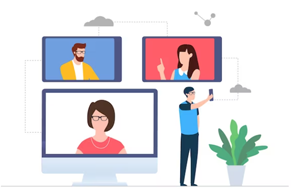
You need Zoom, Skype, or any other video-calling software that the virtual classroom uses to broadcast its lectures.

It is highly advisable to set one room in your house as a private space for the duration of the online classes. You don't have to have a separate room for your child, but you should be able to separate your child in a room where he can receive uninterrupted lessons.

In the hybrid model, you need to be near the in-person provider's learning center or recreational facilities. If you opt for 21K School's hybrid arrangement, you would need to be near one of our partner centers to give your ward the benefits of the in-person aspects of the Hybrid model.

Finally, you need a car to drop off your child at their physical classroom. But it is in no way mandatory because public transport and school buses exist.
Parents who don't want their children to go to traditional schools want to be more active in their education. We asked hybrid educators to offer their best teaching advice for parents. According to them, you must follow these steps to a successful hybrid learning experience tips:

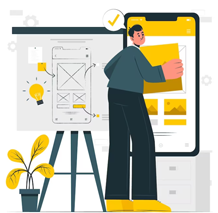
You can alter the online-to-in-person ratio as well as another aspect of the Hybrid Learning model if what you've initially set out isn't working.

It helps to pinpoint what your child will do online and what they'll attend a physical class for. In some models, the in-person aspect is entirely extracurricular, and all classes are online. In others, online sessions are just discussions and the in-person mode covers all the lectures.
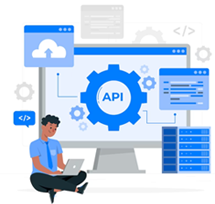
Make sure you sit with your child and have an open dialogue about how they feel. Ask them if there are any challenges and even take suggestions from them.

Just because you can fill their entire day with different online sessions doesn't mean you should. Give them time to process, rest, and relax.

You can set up Hybrid models where online education is completely independent of in-person learning. For instance, your child could get an ICS education in a physical classroom alongside online lessons for music. While such hybridization works, it is natural for the student to prioritize one over the other. Only when the two modes are connected can he view them as one and prioritize them equally.
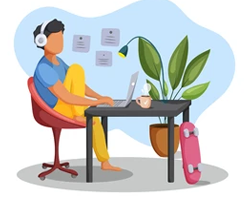
Equip your child with skill-based education and learning skills like time management, self-discipline, etc., so that you don't have to be an in-person invigilator for the entire duration of their online classes.

Finally, you must connect to an IT hotline to receive troubleshooting guidance whenever there is a problem with the online aspect. Moreover, you should also equip your ward to call the hotline when he's experiencing technical difficulties.
Now that you understand what Hybrid Learning is, it is time to address how 21K School can fit into your ward's high-quality education blend.
As mentioned earlier, one way would be to hybridize their education by enrolling them in an online curriculum with 21K School and supplementing it with the help of a local tuition center or learning center. But that's not the only option for Hybrid Education with 21K School now that we have launched HyTech Schooling.
HyTech Schooling is a Hybrid model where the social, emotional, and connective aspects of education are taken to an in-person space, and the curricular aspects are kept online. Once a week, students can go to a nearby designated center to connect with their peers in co-curricular activities.
To make HyTech schooling work, 21K School maps out student concentration in specific cities and partners with a sports partner or arts and music facility to make weekly attendance possible. Since 21K School delivers education to over 7000 students across 632 cities, there are multiple cities where the HyTech arrangement is currently possible.
But if a city or town has only one 21K School student, an in-person attendance day isn't possible there. We envision making HyTech Schooling available in every city our students currently reside in by 2025.
You can email info@21Kschool.com to confirm if this Hybrid model is currently possible in your city. You can also discuss this option with other parents in your social circle, as group enrollments can make hybridization possible even in remote locations.
Have questions? Here we are to help